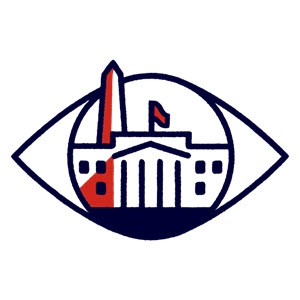Rule Clarifying Joint Employment Under FLSA Released by DOL

The United States Department of Labor (DOL) on January 12, 2020, released its Final Rule regarding joint employment as interpreted under the Fair Labor Standards Act (FLSA).
Background:
Joint employment is the sharing of control and supervision of an employee's activity among two or more business entities. It is important to determine when a joint employer relationship exists because that relationship will govern employees' rights and employers' obligations under the FLSA. In a joint employer situation, an employee's hours worked for both employers for the workweek must be aggregated and considered as one employment when determining whether any overtime pay is due. If this calculation is done incorrectly, or if other statutory requirements are not met, both of the joint employers are liable.
The interpretation of the joint employment rule has not been substantively modified since it was first released over 60 years ago. However, in January of 2016, the DOL's Wage and Hour Division Administrator, David Weil, released Administrator's Interpretation No. 2016-1, subtitled "Joint employment under the Fair Labor Standards Act and Migrant and Seasonal Agricultural Worker Protection Act." It proposed that the interpretation of joint employment "should be defined expansively" and should take into account a worker's dependence on the potential joint employer.
In June of 2017, then DOL Secretary Alexander Acosta withdrew Administrator's Interpretation No. 2016-1 and announced a new proposal would be forthcoming.
Final Rule:
In the final rule, in short, the DOL reverted its joint employer interpretation back to its historical framework and specifically rejected the "economic dependence" proposal by stating as follows:
"Whether the employee is economically dependent on the potential joint employer is not relevant for determining the potential joint employer's liability under the Act. Accordingly, to determine joint employer status, no factors should be used to assess economic dependence."
The DOL Final Rule states there are two joint employer scenarios under the FLSA.
Scenario One: "The employee has an employer who suffers, permits, or otherwise employs the employee to work, but another person simultaneously benefits from that work. The other person is the employee's joint employer only if that person is acting directly or indirectly in the interest of the employer in relation to the employee."
In this situation, the following four factors are relevant to the determination. Those four factors are whether the other person:
- Hires or fires the employee
- Supervises and controls the employee's work schedule or conditions of employment to a substantial degree
- Determines the employee's rate and method of payment
- Maintains the employee's employment records
It is important to note that employment records "means records, such as payroll records, that reflect, relate to, or otherwise record information pertaining to the hiring or firing, supervision and control of the work schedules or conditions of employment, or determining the rate and method of payment of the employee."
Scenario Two: "One employer employs a worker for one set of hours in a workweek, and another employer employs the same worker for a separate set of hours in the same workweek. The jobs and the hours worked for each employer are separate, but if the employers are joint employers, both employers are jointly and severally liable for all of the hours the employee worked for them in the workweek."
The employers will generally be sufficiently associated and therefore joint employers if:
- There is an arrangement between them to share the employee's services.
- One employer is acting directly or indirectly in the interest of the other employer in relation to the employee.
- They share control of the employee, directly or indirectly, by reason of the fact that one employer controls, is controlled by, or is under common control with the other employer. Such a determination depends on all of the facts and circumstances.
The DOL also in its Final Rule provides a number of examples (in addition to "economic dependence") of factors that do not make joint employer status more or less likely under the FLSA, including:
- Operating as a franchisor or entering into a brand and supply agreement, or using a similar business model.
- The potential joint employer's contractual agreements with the employer requiring the employer to comply with specific legal obligations or to meet certain standards to protect the health or safety of its employees or the public.
- The potential joint employer's contractual agreements with the employer requiring quality control standards to ensure the consistent quality of the work product, brand, or business reputation.
- The potential joint employer's practice of providing the employer a sample employee handbook, or other forms, to the employer; allowing the employer to operate a business on its premises (including "store within a store" arrangements); offering an association health plan or association retirement plan to the employer or participating in such a plan with the employer; jointly participating in an apprenticeship program with the employer; or any other similar business practice.
The effective date of the Final Rule is March 16, 2020.
For more information, click on the following links:
Final rule:
https://s3.amazonaws.com/public-inspection.federalregister.gov/2019-28343.pdf
Department of Labor:
https://www.dol.gov/agencies/whd/flsa/2020-joint-employment
ADP Compliance Resources
ADP maintains a staff of dedicated professionals who carefully monitor federal and state legislative and regulatory measures affecting employment-related human resource, payroll, tax and benefits administration, and help ensure that ADP systems are updated as relevant laws evolve. For the latest on how federal and state tax law changes may impact your business, visit the ADP Eye on Washington Web page located at www.adp.com/regulatorynews.
ADP is committed to assisting businesses with increased compliance requirements resulting from rapidly evolving legislation. Our goal is to help minimize your administrative burden across the entire spectrum of employment-related payroll, tax, HR and benefits, so that you can focus on running your business. This information is provided as a courtesy to assist in your understanding of the impact of certain regulatory requirements and should not be construed as tax or legal advice. Such information is by nature subject to revision and may not be the most current information available. ADP encourages readers to consult with appropriate legal and/or tax advisors. Please be advised that calls to and from ADP may be monitored or recorded.
If you have any questions regarding our services, please call 855-466-0790.
ADP, LLC.
One ADP Boulevard,
Roseland, NJ 07068
Updated on January 16, 2020



